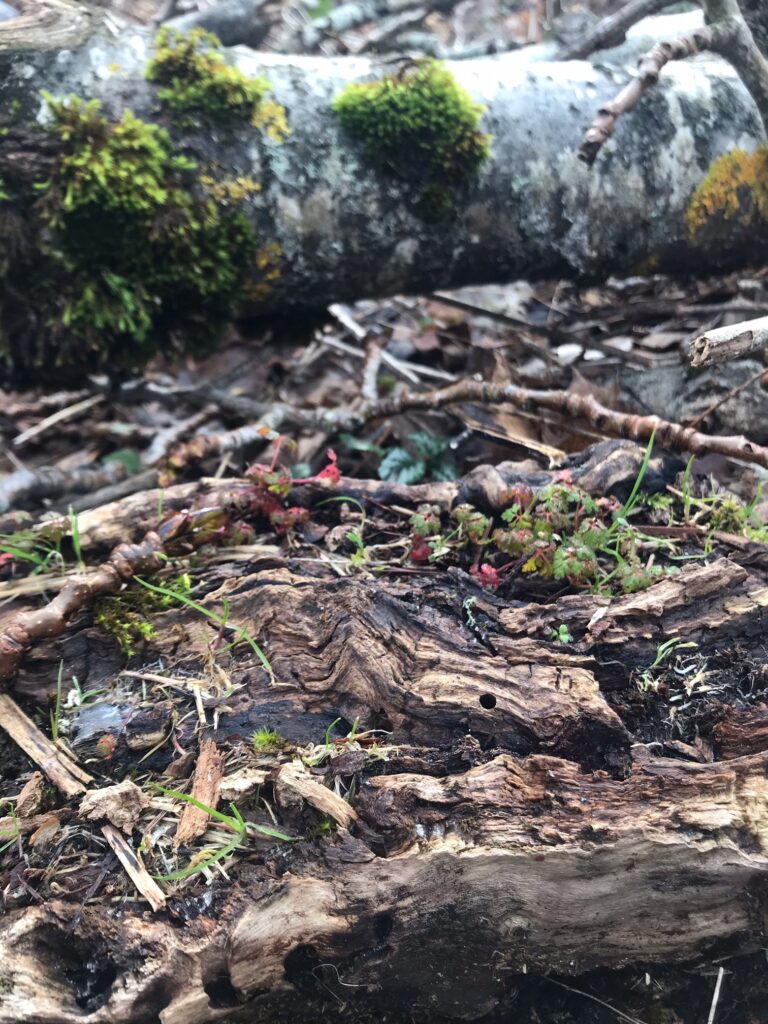How do you make an old growth forest?
This is an interesting question that is brought up in the classic study Ecological Characteristics of Old-Growth Douglas-Fir Forests by Jerry F. Franklin, et al. In it, the authors summarize the 4 distinctive features of old-growth forest:
(1) large, live old-growth trees,
(2) large snags (dead standing trees),
(3) large logs on land, and
(4) large logs on stream.
The authors suggest that “Foresters wishing to maintain or create ecosystems with old-growth characteristics can tie management schemes to maintenance or development of the these four key structural components”.
So, lets look more closes at #3, (large logs on land).
When examining old-growth forests the authors note that approx 23% of the forest floor is comprised of fallen trees and logs at various stages of decay. “Nitrogen-fixing epiphytes are abundant in old-growth trees, and bacterial nitrogen fixation appears to be common in the large woody debris characteristic of old-growth forests”. So, when the wind blows and a branch or a tree falls, nitrogen is being added back into the soil.
In addition, decaying logs are important habitat for reproduction of tree species, as they serve as nurse logs. In addition, Mycorrhizal fungi can colonize logs, presumably using them as sources of water and nutrients. Decayed wood in soil is important for moist, mesic and arid habitat types, which we have in our temperate rainforest region.
So, when we are planning how to steward the land in Champlain Heights Trails, I recommend that we consider maintaining or adding a good amount of fallen branches or logs to the site we are working on, which will help with retention of nutrients in the soil, which are in large amounts within both the living and dead matter of the forest.
So, fallen branches do have value! Amazing, eh?

